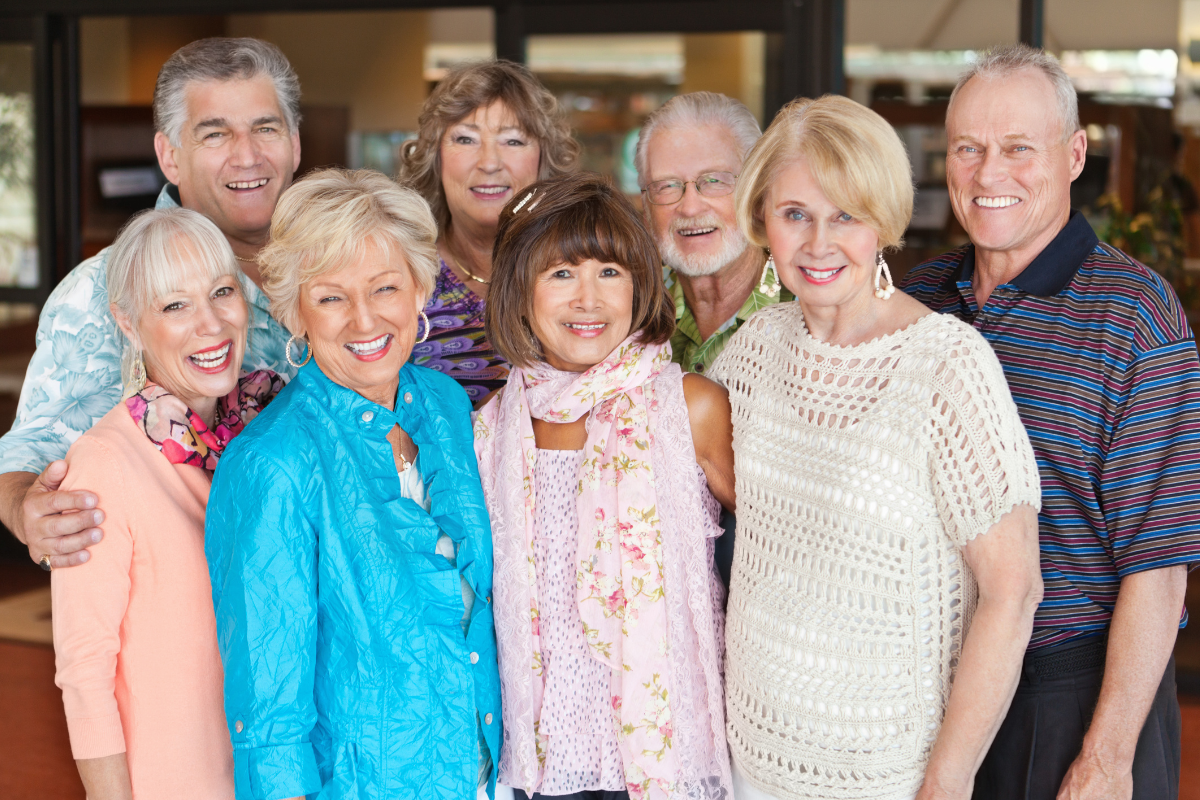Redefining the Retirement Community in 2022 and Beyond

Pre-pandemic, older Americans had expressed a desire to remain in their home for as long as possible. But, social isolation has become a major issue since the pandemic and seniors, especially ‘Solo Agers’ (widowed, divorced or without adult children to care for them) are rethinking their plans to age in place. This trend is beginning to redefine what a retirement community can be.
The image of ‘retirement living’ often conjures images of wheelchairs and health assisted services in institutional looking facilities. That is definitely not a destination for the active senior adult of today. As a couple (or a solo ager), seniors are looking for active social living situations to suit their needs.
What is Active Aging
Active aging has been defined by the World Health Organization as “the process of optimizing opportunities for health, participation and security in order to enhance quality of life as people age.” The term is used to describe the idea of supporting holistic well-being – good physical, social, and mental health and remaining active within one’s family and community.
Fitness and Wellness are central to these new environments
As we age, more and more of us are seeing the need to remain healthy and independent until the time of death – as much as possible. According to the Global Wellness Institute 2022 report, wellness is the biggest trend for older adults. This not only minimizes that part of your life in which one requires physical assistance, but it maximizes our life experience. And wellness includes the emotional, physical and social components of one’s life.
In his 2014 book, Live Long, Die Short, by Roger Landry addresses this specific goal. In this book, the author cites a 10-year study that shows about 70% of physical aging and about 50% of mental aging was determined by our lifestyle.
So, HOW we age is key to HOW FAST we might age – emotionally, socially and physically.
The best retirement community will support this wellness lifestyle goal and will thrive in the coming years.
Building ‘Community’ is critical
The Del Webb golf and tennis 55+ communities in the south have been around for the last several decades and often come to mind when people think of ‘active senior living’ But, the golf cart society is not for everyone.
More and more active adults/55+ are looking at other activities such as pickleball, biking, dancing and yoga to meet their physical and social needs. Still others are looking for less manicured landscapes and more naturalistic ones that allow for more trails and bird watching.
But, beyond that, active seniors are looking to be a part of a true community. And these may or may not be ‘age-exclusive’. One community that is just 45 minutes south of Atlanta, Georgia, Serenbe, is one example of that type of community.
“Serenbe is a neighborhood focused on wellbeing, full of fresh food and fresh air. This community is set among acres of preserved forests and meadows with miles of nature trails that connect homes and restaurants with arts and businesses.” per their website.
A community like Serenbe offers walking trails, cooperative farming opportunities, community farmers markets, eateries, local shops, and social events. These activities allow the entire community to participate. And it is all within walking distance.
As one 73 year old Serenbe resident said, “In a typical suburb, you drive into your garage, shut the door and that is it. Maybe you know your neighbors on either side or across the street but you don’t have anything in common so you don’t want to invest the time and energy. At Serenbe, I feel younger because I am engaged and I’m living a more vibrant life.”
The best retirement community can provide a true ‘community feel’ for their residents and will prosper in the years to come.

Overcoming Ageist Perceptions is key
Across all age groups, retirement communities can be perceived as a negative – seeing them, like assisted-living communities, as a place for seniors to grow frail, disabled, and ultimately die.
Because of this perception, many seniors turn to a retirement community only when they are in need of physical/medical assistance, usually in the last five years of life.
Presenting retirement living as a ‘quality of life’ move rather than a medical assistance need is the challenge, mainly among the active 65 – 85 year old retiree.
Challenges ahead for redefining the retirement community in the coming years
One of the biggest issues in the retirement community industry is the fact that 42% of most older adult/retirement living communities are several decades old and require major reconfigurations to appeal to the current audience. For these older developments, a capital investment will be required to make them current in amenities and features.
Another issue is affordability. Whether it is purchased units or rentals, The cost for a solo ager or a senior couple to live in an independent living retirement community can vary widely – from $1,500 up to $10,000. It can vary by location and provided amenities.
These prices compete with non-age-specific housing options, so there is a burden on the retirement community to show the unique benefits of their community over the other options in the marketplace.
The challenge with achieving a high occupancy on a retirement community will be best addressed with an unbiased market review and with expert guidance on how to position your retirement community as the best option in your market.
